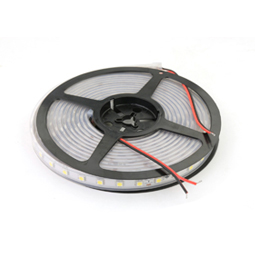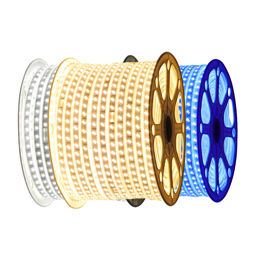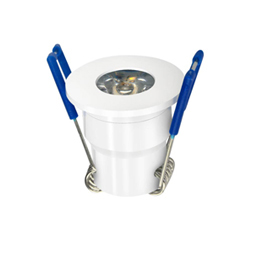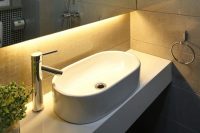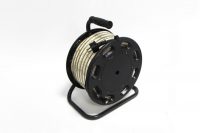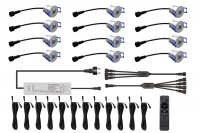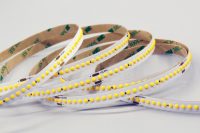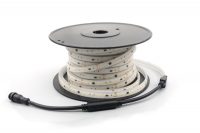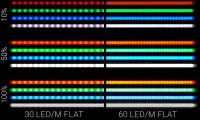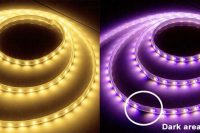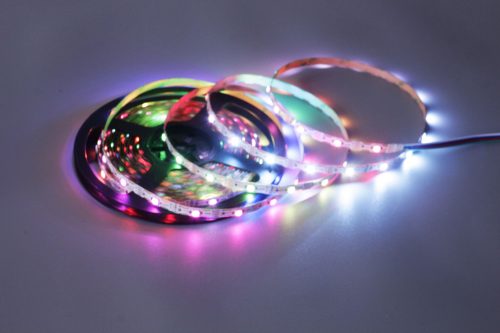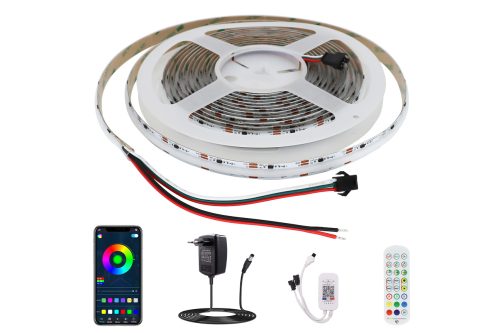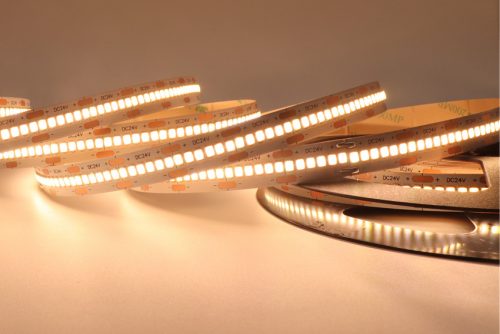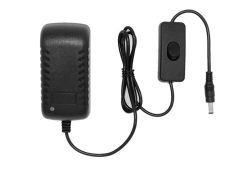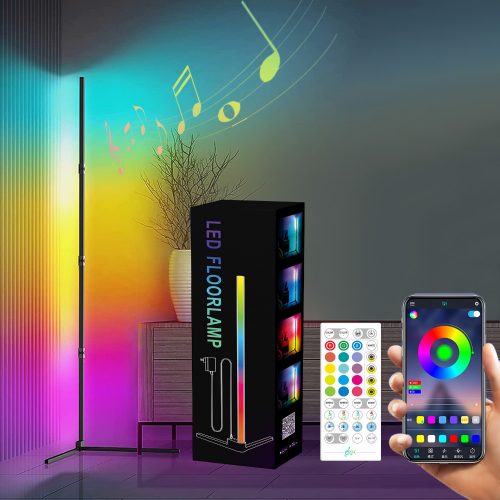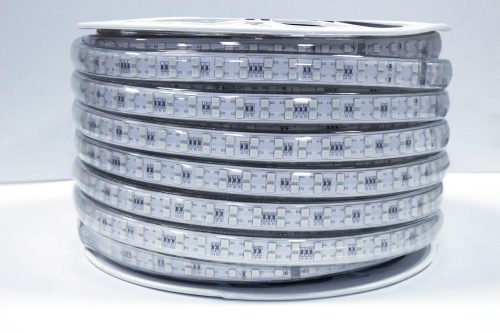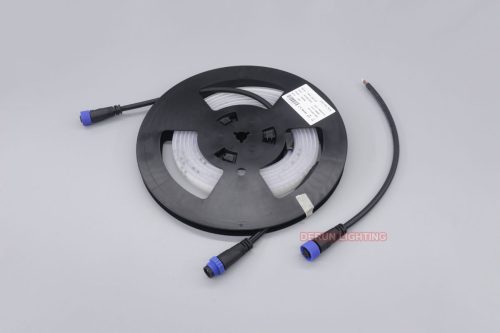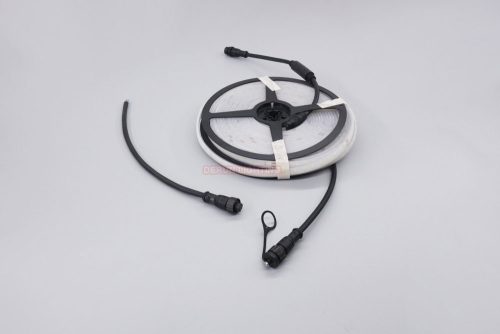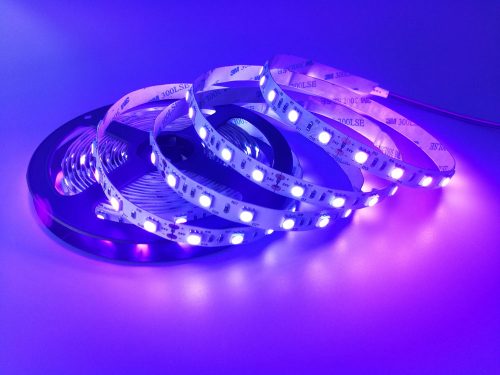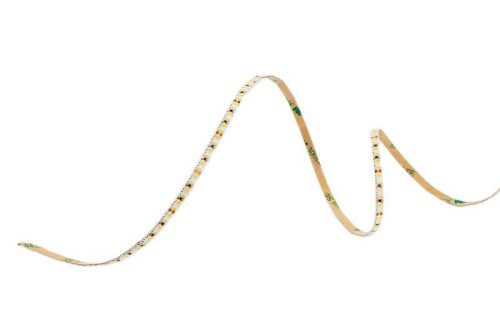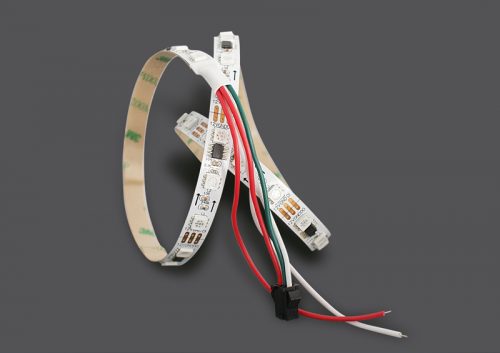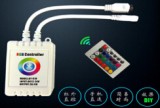Due to the way and location of the LED strips, the circuit structure and physical structure are different. How to design a reasonable LED light strip for customers requires the designer to listen and record the customer’s needs carefully, and also to correct some unreasonable design requirements of the customer in time. In this way, we can provide customers with the most suitable LED strips.
Let’s take the example of an electronic LED strip to explain how to design LED strips for customers.
1. How to design the power supply voltage and circuit structure of the LED light strip?
The conventional LED strips for electronic production are powered by DC 12V. For some customers with special requirements, how do they design the supply voltage of LED strips according to requirements? This requires the designer to understand the driving voltage range of each color LED, and then to properly match the LED strip structure according to the LED driving voltage of different colors, and finally reach the customer’s required power supply voltage.
The following is a list of LED chip drive voltage ranges for conventional colors:
Red: 1.8~2.2V
Yellow: 1.8~2.3V
Blue: 3.2~3.4V
Green: 3.2~3.5V
White: 3.0~3.4V
According to this voltage range, the designer can design the circuit structure of the LED strip according to the voltage specifications provided by the customer to meet the special voltage requirements.
The general circuit structure is three LEDs plus one chip resistor connected in series to form a component circuit, and then combined with other component circuits in parallel to form a group of integral LED lights with series and parallel circuits. In view of the current conventional LED chip driving voltage, the power supply voltage of this structure is almost 12V. If the voltage required by the customer is lower than 12V, then it is necessary to consider the structure of using 2 LEDs plus a chip resistor;
If the voltage requested by the customer is very low, then only the full parallel mode is used (the disadvantage of this method is that the current is unstable and it is easy to burn the LED);
Or an LED matches a resistor (this way is not used as much as possible, because the resistor occupies too much useless power, which is not conducive to energy saving).
2. How to design the spacing of LED strips?
If the length of the LED strip required by the customer has been determined, the number of LEDs has also been determined. Then, according to the circuit structure of the LED strip, the average spacing is calculated, and the calculated spacing is the actual spacing of the LEDs.
For example, the length of the LED strip is 450mm, the number of LEDs is 36, and the circuit structure of 3LED plus 1R is adopted. The spacing of the LEDs is: (450/(36/3))/3=125mm The formula is: (Total Length / number of groups) / 3 = LED spacing (cut width and number of cuts included)
3. How to design the power of the LED light strip?
If the customer wants to specify the power of the LED strip, the designer calculates the size and number of particles of the LED strip based on the rated power supplied by the customer and the nominal power and supply voltage of each LED.
Take the electronic LED strip as an example. If the customer requires 1.8W per meter of LED strip, and the LED requires 1210 and 12V, the LED number is calculated as follows:
-1, each group of LED lights with power: 12Vx20mA = 0.24W
-2. The number of groups of LED lights required: 1.8W/0.24W=7.5 groups/meter
-3, the number of LED particles:
7.5×3 = 22.5 / m (if 3LED plus a resistor R series-parallel circuit structure)
7.5×2=15pcs/m (if 2LED plus one resistor R is used in series-parallel circuit structure)
Obviously, this number of groups and the number of LED particles are unreasonable. How do you design the structure of the LED strip to meet this power requirement?
Methods as below:
Buck: reduce the voltage of each group of LED strips to 10V, then the power of each group of LED strips is 10x20mA=0.2W. The total number of LED strips required is: (1.8-0.2)/0.2=8 groups, LED particles The number is: 8×3 = 24 / m (each meter of LED light with input needs to design a 20 ohm, 1/4W resistance position, using resistors to divide the voltage, occupying power 0.2W)





